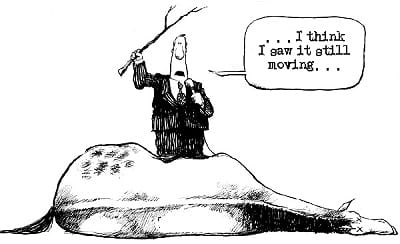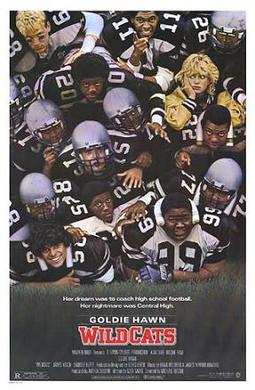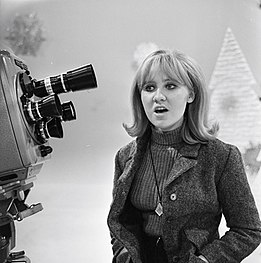
The Cinema Thread
- Vrede too
- Superstar Cultmaster
- Posts: 60483
- Joined: Fri Apr 03, 2015 11:46 am
- Location: Hendersonville, NC
Re: The Cinema Thread
Vrede too wrote: ↑Sat Oct 14, 2023 11:05 pmYou jest, but:
Can We Move On: From the Trope of the Male Savior Who Rescues Women From Patriarchy in ‘Woke’ (Bollywood) Movies
Decoding Male Saviour Complex In Indian Films
Woke filmmakers championing women’s rights forget that women need empathy and not sympathy
6 Bollywood movies that are problematic and affected by Saviour complexSound familiar?Stereotypes in Bollywood Cinema: Does Article 15 Reinforce the Dalit Narrative?
... Most Bollywood films could be seen suffering from a Brahmin saviour complex- where the fair skinned Savarna hero saves the day....
Come to think of it "Bollywood" is a racist term, defining rich Indian cinema by its White (mostly) LA cousin.
Lament the murder, not the murdered.
1312. ETTD. 86 47.
1312. ETTD. 86 47.
- O Really
- Admiral
- Posts: 23954
- Joined: Tue Sep 18, 2012 3:37 pm
Re: The Cinema Thread
Yeah, I didn't expect that. And since I had just made it up, I didn't bother to inquire from the google. Maybe I should have asked about Japanese films. Incidentally, turns out that saviour film "The Last Samurai" was received better in Japan than in the US even with a white guy hero.
- Vrede too
- Superstar Cultmaster
- Posts: 60483
- Joined: Fri Apr 03, 2015 11:46 am
- Location: Hendersonville, NC
Re: The Cinema Thread
Because they saw it as a comedy.O Really wrote: ↑Sun Oct 15, 2023 1:10 amYeah, I didn't expect that. And since I had just made it up, I didn't bother to inquire from the google. Maybe I should have asked about Japanese films. Incidentally, turns out that saviour film "The Last Samurai" was received better in Japan than in the US even with a white guy hero.
More seriously, the white savior narrative in film was discussed here and in Japan.
https://en.wikipedia.org/wiki/The_Last_ ... and_debate
One thing that stands out is that it was very much superior to our mostly racist prior representations of the Japanese.
Earlier, I looked up Clint Eastwood's 2006 companion films, Letters from Iwo Jima (Japanese viewpoint) and Flags of Our Fathers (American viewpoint). Good on Clint for doing what had never been done before AFAIK.
Both were critical successes, Letters somewhat more so.
Both grossed about the same, but Letters was the financial success due to its budget being only $19 million compared to $90 million for Flags.
Not sure what's up with that and whether it has any relevance to our discussion. Do ships and planes cost that much more? Do American actors earn that much more? Is Ryan Phillippe that greedy? Was there a deliberate choice to invest more in the American viewpoint? Was it a surprise how well the Japanese viewpoint would do?
Lament the murder, not the murdered.
1312. ETTD. 86 47.
1312. ETTD. 86 47.
- O Really
- Admiral
- Posts: 23954
- Joined: Tue Sep 18, 2012 3:37 pm
Re: The Cinema Thread

I guess I can't quite get past the sense that use of the "White Saviour" term isn't descriptive (which would be fine), but is almost always pejorative, which I disagree with. Sure "Avatar" could have been just a story of blue people fighting off invaders, but that would have missed a lot. Romance, cultural adaption, insight on what a bunch of savages your old culture was...yada. Really wouldn't have been much of a story. Of course, the "hero" could have been a Black guy, an Asian, or even some alien from another planet, but without him (it) the story yawns.
BTW, is "Terminator 2" a White Saviour film? Sure the skin looks white, but he's really all machine. Maybe we need a "Machine Saviour" trope. But again, like "Avatar" without a hero, there's no story, and they certainly did not make Sarah look weak or some shrinking violet type.
- GoCubsGo
- Admiral
- Posts: 23978
- Joined: Sun Sep 23, 2012 2:22 am
Re: The Cinema Thread
Can a woman be a white savior?
Eamus Catuli~AC 000000 000101 010202 020303 010304 020405....Ahhhh, forget it, it's gonna be a while.
Foxtrot
Delta
Tango
Foxtrot
Delta
Tango
- O Really
- Admiral
- Posts: 23954
- Joined: Tue Sep 18, 2012 3:37 pm
- Vrede too
- Superstar Cultmaster
- Posts: 60483
- Joined: Fri Apr 03, 2015 11:46 am
- Location: Hendersonville, NC
Re: The Cinema Thread
Even more on point:
https://en.wikipedia.org/wiki/White_sav ... ated_films
The Blind Side
Mother Teresa (numerous representations)
Freedom Writers
The Grizzlies
The Help
Music of the Heart
Same Kind of Different as Me
Sunset Park - Yep, even Rhea Perlman
Wildcats

Last edited by Vrede too on Sun Oct 15, 2023 9:55 pm, edited 1 time in total.
Lament the murder, not the murdered.
1312. ETTD. 86 47.
1312. ETTD. 86 47.
- billy.pilgrim
- Admiral
- Posts: 15632
- Joined: Wed Oct 10, 2012 1:44 pm
Re: The Cinema Thread
Damn, my big long well thought out response disappeared
Of course a woman must be a WS, otherwise the term is sexist.
Is a black hero a Black Savior?
This designation is a relatively new literary term that seems, to me, better suited to describe the more cartoonish examples of superior white men rescuing, or otherwise saving inferior brown people, but it is being applied to what has always been the Hero category.
"6 Common Hero Archetypes in Literature
From Batman to Gandalf, compelling heroes give the reader a character to root for and a pair of eyes through which to follow the story. Yet not all heroes are created equal. Heroes can be flawed, tragic, brave, or even villainous, and knowing which type of hero your protagonist is can help you write an interesting and convincing main character.
Broadly, a hero is a main character in literature. The hero character may possess great or admirable qualities and be forced to overcome obstacles in the course of the story.
Heroes can come in all shapes and sizes. Here are the six most common types of heroes found in literature:
1. Everyman hero: Everyman heroes are ordinary people without any apparent heroic qualities or characteristics. Bilbo Baggins is a common hobbit without extraordinary abilities who nonetheless finds himself on an adventure to obtain the treasure guarded by Smaug the dragon.
2. Classical hero: A classical hero is a character who possesses a great talent or ability that separates them from the rest of their contemporaries. This hero archetype is present in Star Wars when the seemingly normal Luke Skywalker begins to wield the extraordinary power of the Force.
3. Epic hero: Popular in Greek mythology, epic heroes possess otherworldly heroic qualities. Examples of heroes in this tradition date back as far as The Epic of Gilgamesh from 1800 BC. Other epic heroes include Achilles (from Homer’s The Iliad), Odysseus, Beowulf, King Arthur, and superheroes like Superman.
4. Tragic hero: A tragic hero is a hero who possesses a fatal flaw or makes an error in judgment that ultimately leads to their downfall. In William Shakespeare’s Romeo and Juliet, Romeo’s fatal flaw is his unrestrained passion and emotional impulsiveness, which leads to his own death and the death of Juliet. Brutus, from Shakespeare’s Julius Caesar, is able to be manipulated into killing Caesar because of his overwhelming loyalty to his country.
5. Anti-hero: Anti-heroes do not possess traditionally heroic qualities. In fact, they have qualities that seem more befitting of a villain, such as dishonesty, greed, or general immorality. The Great Gatsby has an iconic anti-hero in Jay Gatsby, whose rise from poverty was accomplished through involvement in organized crime and theft. In Star Wars, Han Solo is an arrogant, roguish smuggler who eventually overcomes his own self-interest to help the Rebel Alliance.
6. Byronic hero: The Byronic hero—an archetype codified by English romantic poet Lord Byron—is known for being prickly, sullen and inscrutable on the outside, while possessing a rich inner life under the surface. These heroes are often profoundly flawed and wounded, but nonetheless possess strong morals and passions. They commonly question the beliefs and conventions of normal society, leading to their own social"
https://www.masterclass.com/articles/co ... literature
Trump: “We had the safest border in the history of our country - or at least recorded history. I guess maybe a thousand years ago it was even better.”
- Vrede too
- Superstar Cultmaster
- Posts: 60483
- Joined: Fri Apr 03, 2015 11:46 am
- Location: Hendersonville, NC
Re: The Cinema Thread
Black heroes usually rescue other Blacks, which better reflects reality than the White savior trope does, or they rescue all people equally. The rarity of cinematic Blacks rescuing all or mostly Whites is one of the reasons that To Sir, with Love remains such a standout 56 years later.billy.pilgrim wrote: ↑Sun Oct 15, 2023 9:55 pmDamn, my big long well thought out response disappeared
Of course a woman must be a WS, otherwise the term is sexist.
Is a black hero a Black Savior?
Aside: Is your Lulu named for:

https://en.wikipedia.org/wiki/Lulu_(singer)
https://www.youtube.com/watch?v=E1E4KXedQjY
Lament the murder, not the murdered.
1312. ETTD. 86 47.
1312. ETTD. 86 47.
- billy.pilgrim
- Admiral
- Posts: 15632
- Joined: Wed Oct 10, 2012 1:44 pm
Re: The Cinema Thread
Nope, Lulu's name was pulled out of thin air.Vrede too wrote: ↑Sun Oct 15, 2023 10:18 pmBlack heroes usually rescue other Blacks, which better reflects reality than the White savior trope does, or they rescue all people equally. The rarity of cinematic Blacks rescuing all or mostly Whites is one of the reasons that To Sir, with Love remains such a standout 56 years later.billy.pilgrim wrote: ↑Sun Oct 15, 2023 9:55 pmDamn, my big long well thought out response disappeared
Of course a woman must be a WS, otherwise the term is sexist.
Is a black hero a Black Savior?
Aside: Is your Lulu named for:
https://en.wikipedia.org/wiki/Lulu_(singer)
https://www.youtube.com/watch?v=E1E4KXedQjY
But wouldn't that still make To Sir With Love a Black Savior film?
Trump: “We had the safest border in the history of our country - or at least recorded history. I guess maybe a thousand years ago it was even better.”
- Vrede too
- Superstar Cultmaster
- Posts: 60483
- Joined: Fri Apr 03, 2015 11:46 am
- Location: Hendersonville, NC
Re: The Cinema Thread
Yes, that's my point. It's one of the very few Black Savior films, not counting Blacks rescuing Blacks or rescuing everybody. The Wiki article says:billy.pilgrim wrote: ↑Mon Oct 16, 2023 11:11 pmNope, Lulu's name was pulled out of thin air.
But wouldn't that still make To Sir With Love a Black Savior film?
Moreover, it's not just a triumph for Thackeray's own character, but is also a statement that his Black upbringing and culture is superior to the culture of the miscreant urban kids he wins over and "rescues".... As an inspirational tale of the human spirit, the storyline of the white-savior-teacher is not racist, in itself, but is culturally problematic because it is a variant of the white-savior narrative that factually misrepresents the cultural and societal reality that there exist minority-group teachers who have been successfully educating (racial, ethnic, cultural) minority-group students in their communities, without the saving stewardship of white people....
The 1967 British drama To Sir, with Love is notable for inverting the white savior formula. Sidney Poitier stars as a Black teacher who accepts a teaching position in an inner city school where the class consists of troubled, delinquent, white British youth.
Lament the murder, not the murdered.
1312. ETTD. 86 47.
1312. ETTD. 86 47.
- billy.pilgrim
- Admiral
- Posts: 15632
- Joined: Wed Oct 10, 2012 1:44 pm
Re: The Cinema Thread
It's a great filmVrede too wrote: ↑Mon Oct 16, 2023 11:44 pmYes, that's my point. It's one of the very few Black Savior films, not counting Blacks rescuing Blacks or rescuing everybody. The Wiki article says:billy.pilgrim wrote: ↑Mon Oct 16, 2023 11:11 pmNope, Lulu's name was pulled out of thin air.
But wouldn't that still make To Sir With Love a Black Savior film?Moreover, it's not just a triumph for Thackeray's character, but is also a statement that his Black upbringing and culture is superior to the culture of the miscreant urban kids he wins over and "rescues".... As an inspirational tale of the human spirit, the storyline of the white-savior-teacher is not racist, in itself, but is culturally problematic because it is a variant of the white-savior narrative that factually misrepresents the cultural and societal reality that there exist minority-group teachers who have been successfully educating (racial, ethnic, cultural) minority-group students in their communities, without the saving stewardship of white people....
The 1967 British drama To Sir, with Love is notable for inverting the white savior formula. Sidney Poitier stars as a Black teacher who accepts a teaching position in an inner city school where the class consists of troubled, delinquent, white British youth.
Trump: “We had the safest border in the history of our country - or at least recorded history. I guess maybe a thousand years ago it was even better.”
- GoCubsGo
- Admiral
- Posts: 23978
- Joined: Sun Sep 23, 2012 2:22 am
Re: The Cinema Thread
I remember the first time I saw it, I was home sick from school in maybe junior high, watching it in bed, I knew who Sidney Portier was but don't think I'd ever seen one of his films.
I think I actually cried at the end.
Eamus Catuli~AC 000000 000101 010202 020303 010304 020405....Ahhhh, forget it, it's gonna be a while.
Foxtrot
Delta
Tango
Foxtrot
Delta
Tango
- GoCubsGo
- Admiral
- Posts: 23978
- Joined: Sun Sep 23, 2012 2:22 am
Re: The Cinema Thread
Eamus Catuli~AC 000000 000101 010202 020303 010304 020405....Ahhhh, forget it, it's gonna be a while.
Foxtrot
Delta
Tango
Foxtrot
Delta
Tango
- Vrede too
- Superstar Cultmaster
- Posts: 60483
- Joined: Fri Apr 03, 2015 11:46 am
- Location: Hendersonville, NC
Re: The Cinema Thread
Wilson died in 2010. Good riddance, but I would have liked to challenge him on how his "War" worked out for the US, the Afghan people and even the Russian people.GoCubsGo wrote: ↑Tue Oct 17, 2023 12:23 amNew on my rewatch list.
https://en.m.wikipedia.org/wiki/Charlie ... War_(film)
Lament the murder, not the murdered.
1312. ETTD. 86 47.
1312. ETTD. 86 47.
- billy.pilgrim
- Admiral
- Posts: 15632
- Joined: Wed Oct 10, 2012 1:44 pm
Re: The Cinema Thread
War doesn't work
Trump: “We had the safest border in the history of our country - or at least recorded history. I guess maybe a thousand years ago it was even better.”
- Vrede too
- Superstar Cultmaster
- Posts: 60483
- Joined: Fri Apr 03, 2015 11:46 am
- Location: Hendersonville, NC
Re: The Cinema Thread
Coincidental timing:
Republicans and Democrats agree on one thing: The Afghan war wasn't worth it, AP-NORC poll shows
... Two-thirds of Americans say the war in Afghanistan was not worth fighting; 65% of Democrats and 63% of Republicans agree on that evaluation. Many have doubts about how successful the U.S. was at accomplishing more specific goals such as eliminating the threat from extremists or improving opportunities for women....
Eliminating the threat from Islamic extremists in Afghanistan during the war is still seen as an important goal by many across party lines: 46% of Democrats and 44% of Republicans called that highly important. But only about one-quarter in each group said this successfully happened during the war....
Lament the murder, not the murdered.
1312. ETTD. 86 47.
1312. ETTD. 86 47.
- Vrede too
- Superstar Cultmaster
- Posts: 60483
- Joined: Fri Apr 03, 2015 11:46 am
- Location: Hendersonville, NC
Re: The Cinema Thread
Not bad for a Florida/hurricane/gator action/horror flick. Be careful, billy.pilgrim. FYI, waterproof flares have many uses.Crawl
2019 R 1h 27m
A young woman, while attempting to save her father during a category 5 hurricane, finds herself trapped in a flooding house and must fight for her life against alligators.
Tomatometer 84%, Audience Score 75%
An action-packed creature feature that's fast, terrifying, and benefits greatly from a completely game Kaya Scodelario, Crawl is a fun throw-back with just enough self-awareness to work.
Lament the murder, not the murdered.
1312. ETTD. 86 47.
1312. ETTD. 86 47.
- billy.pilgrim
- Admiral
- Posts: 15632
- Joined: Wed Oct 10, 2012 1:44 pm
Re: The Cinema Thread
bush still says it was a success and that he has no regrets.Vrede too wrote: ↑Wed Oct 18, 2023 10:50 amCoincidental timing:Republicans and Democrats agree on one thing: The Afghan war wasn't worth it, AP-NORC poll shows
... Two-thirds of Americans say the war in Afghanistan was not worth fighting; 65% of Democrats and 63% of Republicans agree on that evaluation. Many have doubts about how successful the U.S. was at accomplishing more specific goals such as eliminating the threat from extremists or improving opportunities for women....
Eliminating the threat from Islamic extremists in Afghanistan during the war is still seen as an important goal by many across party lines: 46% of Democrats and 44% of Republicans called that highly important. But only about one-quarter in each group said this successfully happened during the war....
Trump: “We had the safest border in the history of our country - or at least recorded history. I guess maybe a thousand years ago it was even better.”
